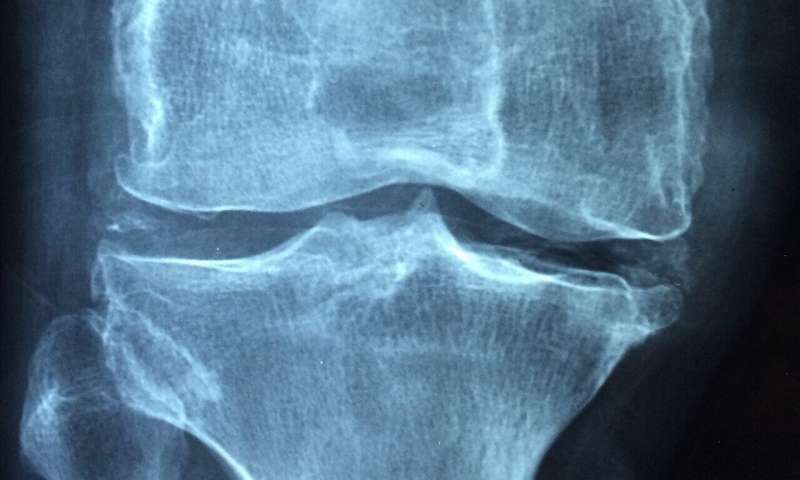Exercise prompts cells to react in a way that could protect against bone cancer and other bone-related illnesses

Scientists at Nottingham Trent University say that such occurrences in the bone cells is also likely to play an important role in helping to limit the risk of other bone illnesses, such as osteoporosis.
The research team, which included musculoskeletal biologists and cancer researchers, aimed to identify the mechanisms involved in bone tissue regeneration and the cancer-protective actions of exercise.
They show for the first time that, following exercise, human bone cells trigger a series of events in the body linked to the cell cycle, DNA repair and cancer—including the 'P53' gene, which is a known tumor suppressor.
They found that exercised bone cells secreted proteins which are implicated in ossification, the natural process of bone formation and remodeling.
The researchers argue that the process of new bone formation and remodeling as a result of exercise could potentially leave little room for cancer cells, such as breast or prostate cancer, to invade the bones and to become established through metastasis.
This same process could also contribute to the maintenance of bone mass and therefore limit the progression of osteoporosis.
Metastasis is the spreading of cancer from its original site to other parts of the body, such as other organs, or bones.
The survival of cancer patients could be significantly improved by stopping the spread of cancer to the bones.
The research pinpoints two potential mechanisms driving this cancer protective effect, the researchers say.
For the study, the researchers used human bone cells, cultured in a bioreactor to mimic the mechanical load that cells experience when someone is exercising.
While exercise is known for its regenerative and cancer protective effects, until now the underpinning mechanisms for this in relation to metastatic bone cancer and potentially other bone illnesses had not been established.
Investigating tissue regeneration in this way—by seeing how the bones cells respond to mechanical loading to mimic exercise—is a new area of study and helps to overcome the significant challenges which would be involved in using volunteers.
"The signaling pathways and biological processes we observed in this process in response to exercise were significant," said lead researcher Dr. Lívia Santos, an expert in musculoskeletal biology in Nottingham Trent University's School of Science and Technology.
She said "Our findings are important from a clinical perspective because they will help to inform regenerative rehabilitation protocols for patients with bone conditions or metastatic cancer. From a motivational standpoint we hope that a better understanding of the therapeutic benefits of exercise might motivate more patients to engage in such physical activities.
"This is a new area of study, our work was a cell-based model replicating the mechanical load experienced by someone exercising. Further work with other bone cells would be required to explore whether it is impact-type exercise, or other forms of exercise, which might best active these processes."
Senior researcher Dr. David Boocock, an expert in proteomics and cancer in Nottingham Trent University's John Van Geest Cancer Research Centre, added: "A better understanding of the incredibly complex changes that occur in the body after even only a single bout of exercise and the implications on disease is an important area of research, and we have the tools available today to do this."
The study is published in the journal npj Regenerative Medicine.
More information: Lívia Santos et al, Multiomic analysis of stretched osteocytes reveals processes and signalling linked to bone regeneration and cancer, npj Regenerative Medicine (2021). DOI: 10.1038/s41536-021-00141-3



















